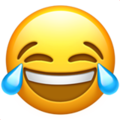More than just cute pictures, these digital icons are a lingua franca for the digital age.
The Internet has greatly changed the way we communicate. Since body language and verbal tone do not translate in our text messages or e-mails, we’ve developed alternate ways to convey nuanced meaning.The most prominent change to our online style has been the addition of two new-age hieroglyphic languages: emoticons and emoji
An emoji is a pictogram, logogram, ideogram or smiley embedded in text and used in electronic messages and web pages. The primary function of emoji is to fill in emotional cues otherwise missing from typed conversation.
Some examples of emoji are , ,  , , ️, , , , ,
, , ️, , , , ,  , , , among many others. Emoji exist in various genres, including facial expressions, common objects, places and types of weather, and animals. They are much like emoticons, but emoji are pictures rather than typographic approximations
, , , among many others. Emoji exist in various genres, including facial expressions, common objects, places and types of weather, and animals. They are much like emoticons, but emoji are pictures rather than typographic approximations
EMOJI ARE MORE than a millennial messaging fad. Think of them more like a primitive language. The tiny, emotive characters—from to to —represent the first language born of the digital world, designed to add emotional nuance to otherwise flat text.
Emoji have been popular since they first appeared on Japanese mobile phones in the late ’90s, and in the past few years they have become a hallmark of the way people communicate. They show up in press releases and corporate emails.
Emoji are for everyone.That puts a lot of pressure on the designs and standards for emoji. If emoji are a language for everyone in the digital world, then the emoji lexicon needs to constantly evolve across cultures , across screens , across time .
Today there are thousands of emoji depicting people in all their diversity, and thousands more to represent the things we interact with in our world: money , prayer beads , Apple Watches
In the future, as the world becomes increasingly digital and increasingly globalized, emoji will become important tools for translation and communication—a lingua franca for the digital age.
1) The emoji language is the world’s fastest growing language.
Emoji use has increased rapidly since Apple added the Emoji keyboard to iOS in 2011 and has been widely described as the ‘world’s fastest growing language’ by many experts. In August 2013 the word ‘emoji’ was officially added to the Oxford English Dictionary with the definition being “a small digital image or icon used to express an idea or emotion.”
2) There’s controversy around who actually invented emojis.
While the Egyptians are responsible for creating hieroglyphics (which could be argued as the first true emoji), Japanese phone carrier Docomo has most often been widely credited as the originator of what we know as emoji today. However, new evidence shows that, in fact, Softbank Japan released a phone with support for 90 distinct emoji characters in 1997 which is 2 years before Docomo released emoji capability on their phone.
3) ‘Emoji’ translated is "picture character”.
The word emoji literally means "picture" (e) + "character" (moji) in Japanese.
4) Today there are 3000+ emojis.
Unicode’s official library of emojis is updated every year and as of March 2019 there are 3019 official emojis. 230 new emojis were approved for 2019 with additions including new colors for squares, circles, and hearts as well as a diving mask, hindu temple, and flamingo. Accessibility emojis proposed by Apple in 2018 are also included in this release, as well as a gender inclusive couple.
5) There is a World Emoji Day.
World Emoji Day is an unofficial holiday celebrated on July 17 every year. The day is deemed a "global celebration of emoji" and is celebrated with emoji events and product releases. July 17 was chosen because its the date displayed on the Calendar Emoji.
6) ‘Face With Tears of Joy’ was 2018’s most used emoji.
For the third year running, the “Face with Tears of Joy” emoji reigns supreme on social media - this same symbol was even the Oxford Dictionary’s Word of the Year in 2015. ‘Red Heart’, ‘Smiling Face With Heart Eyes’ and ‘Thinking Face’ followed as the next 3 most popular emojis used in 2018.
7) More negative emojis were used during 2016’s US Election than ever before.
According to Brandwatch, the largest volume of negative emojis ever recorded was during the American election in November 2016. During the week of the election, negative emoji use grew to 28.9% which was a two year high at the time.8) Men and women use emojis differently.
Another interesting fact released by Brandwatch shows that emoji use differs between men and women. Apparently, women are 11% more likely to use emojis that represent joy and men are 35% more likely to use emojis that represent fear. Other studies show that women are 16% more likely to use emojis compared to men. However, 56% of Eggplant emojis are sent by men...9) 3472222 emojis are sent PER SECOND on Messenger.
Over 5 billion emojis are sent of Messenger everyday vs ‘only’ 60 million emojis being sent on Facebook. Stats also show that people are a lot more likely to send heart emojis on Messenger (because it’s a private channel) vs ‘Tears of Joy’ being the most popular on Facebook.10) Survey result: Over 50% of recruiters are already using emojis.
We surveyed over 250 recruiters last year and we found that nearly 60% of recruiters were already using emojis when texting with candidates with another 15% planning on using them in the future. We’ve noticed more emojis ‘sneaking’ into professional communication and we predict that this will continue, especially as more of Generation Z enters the workforce.
Last edited:
